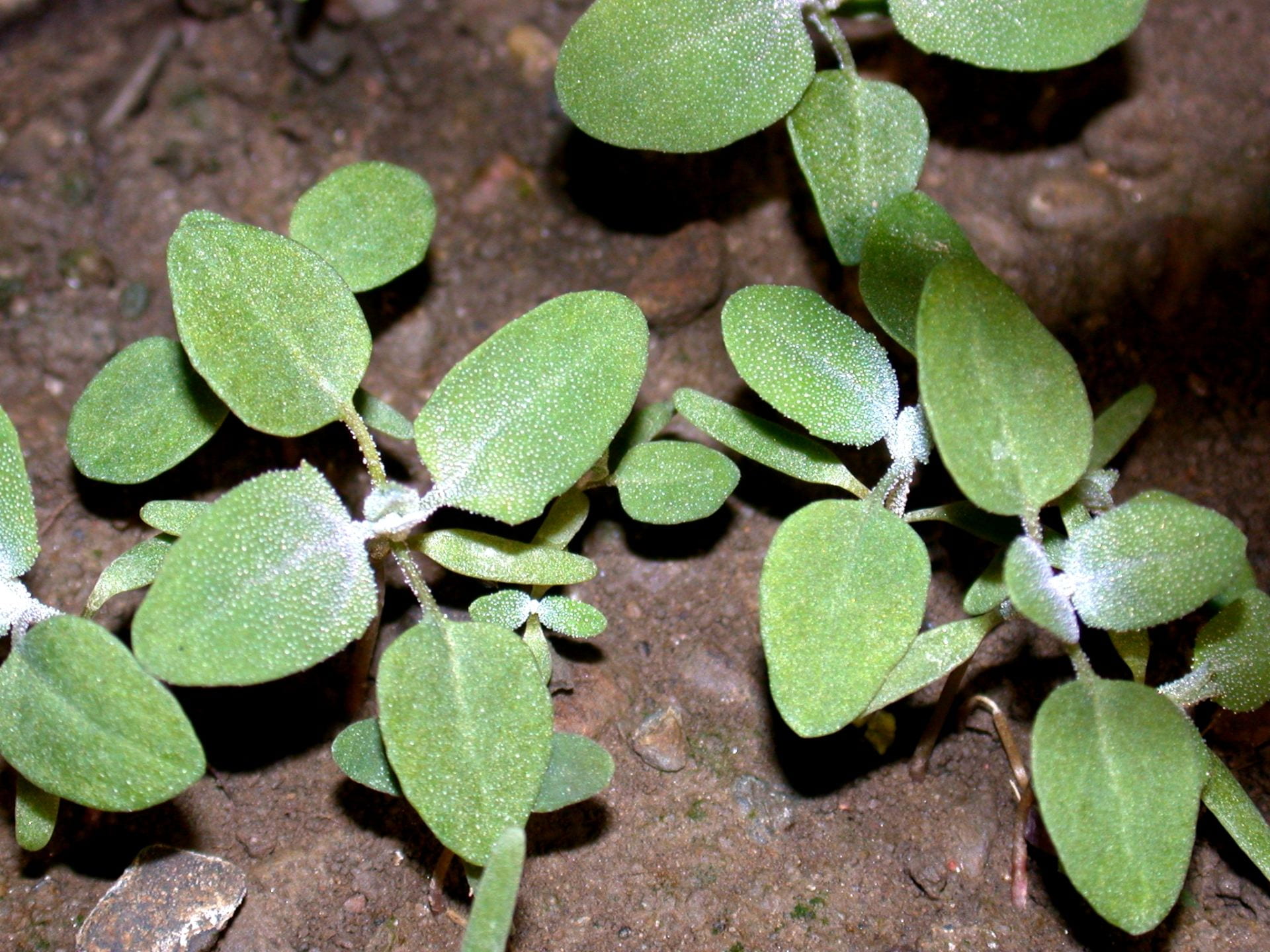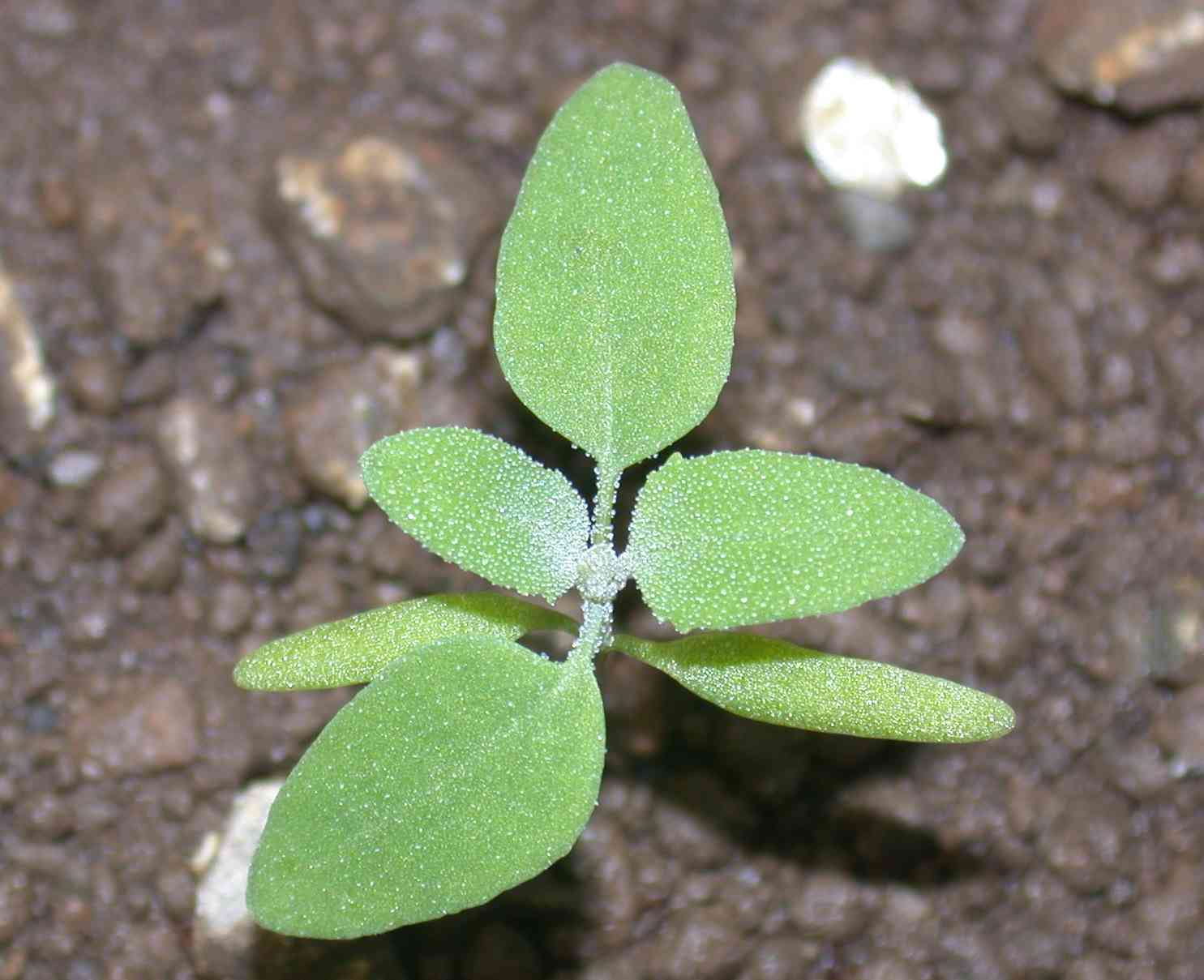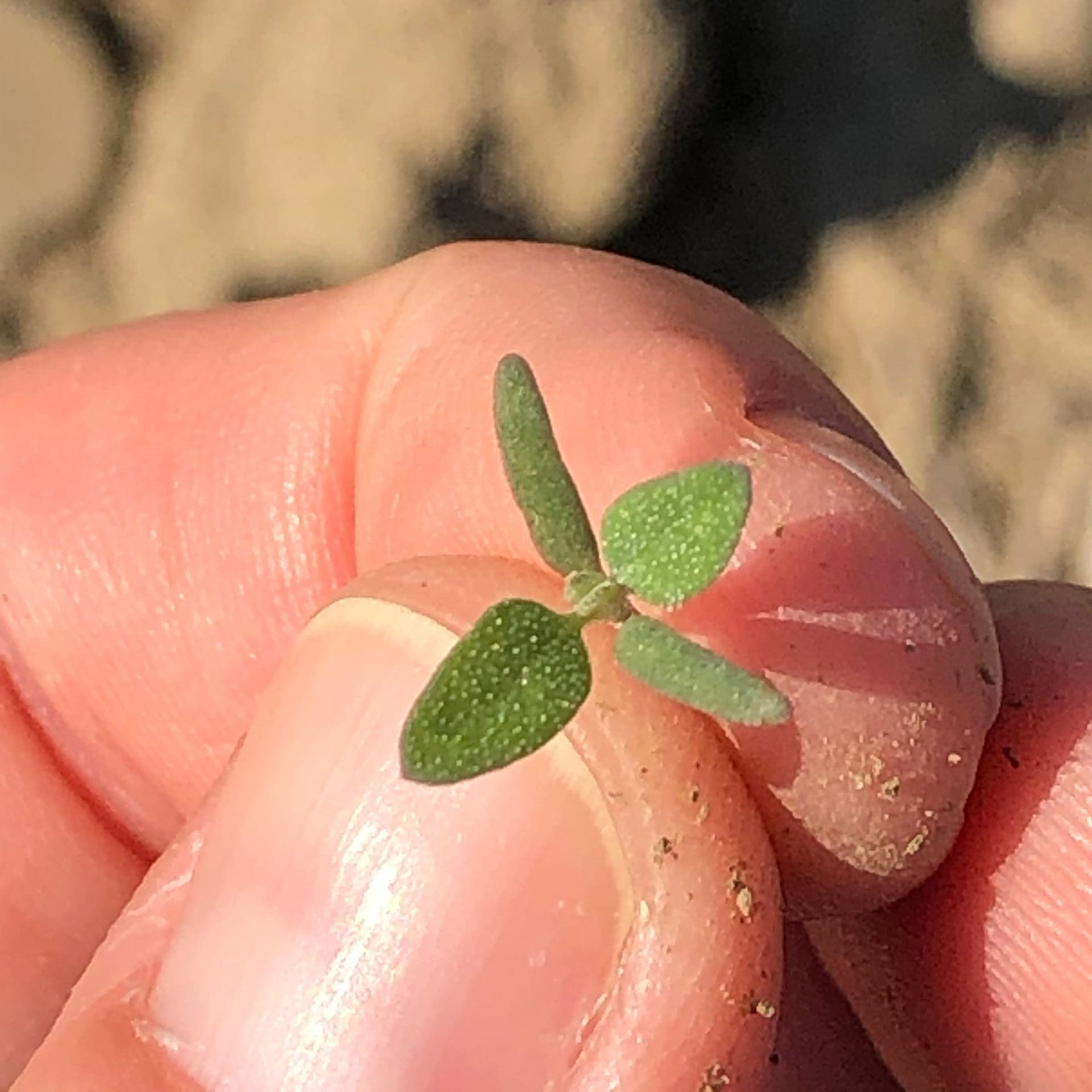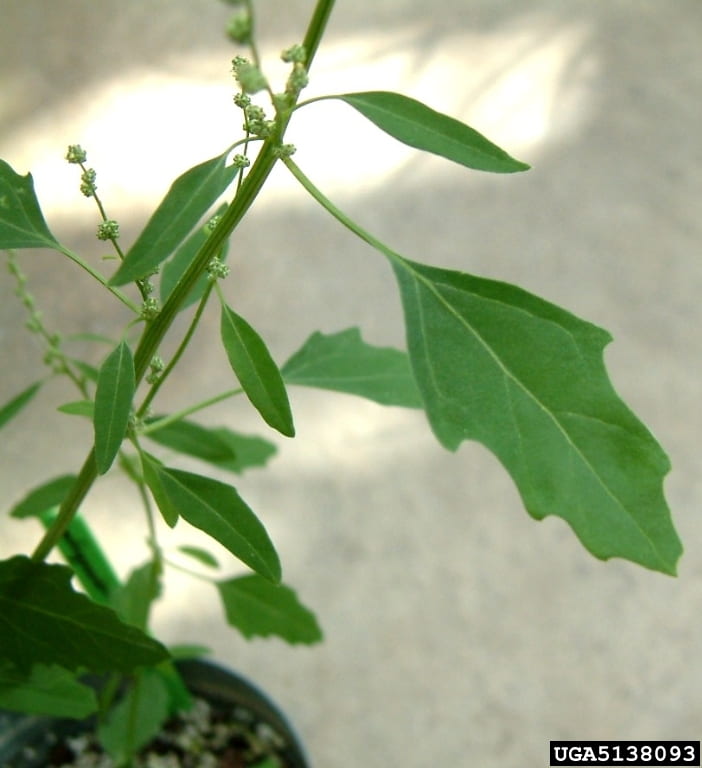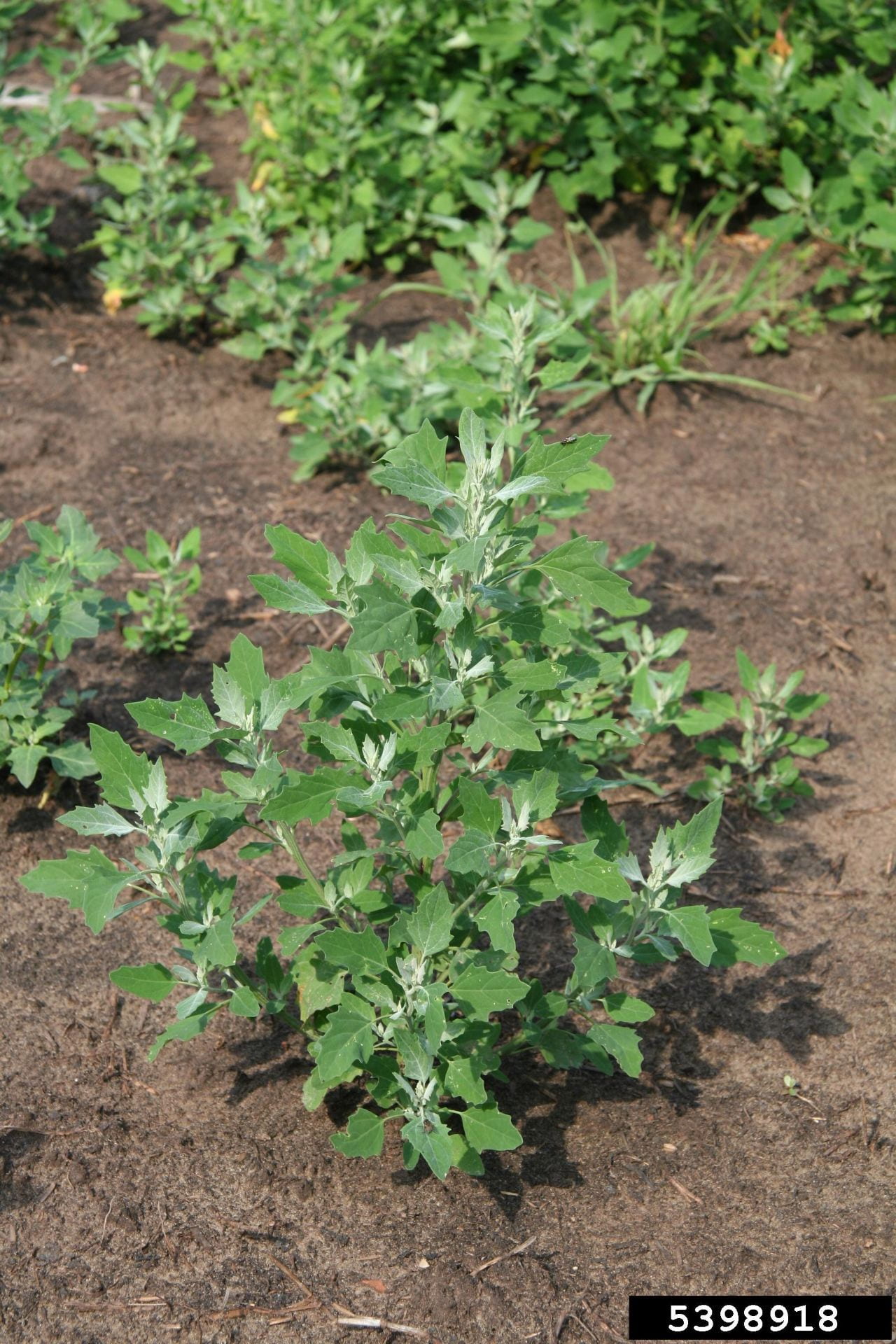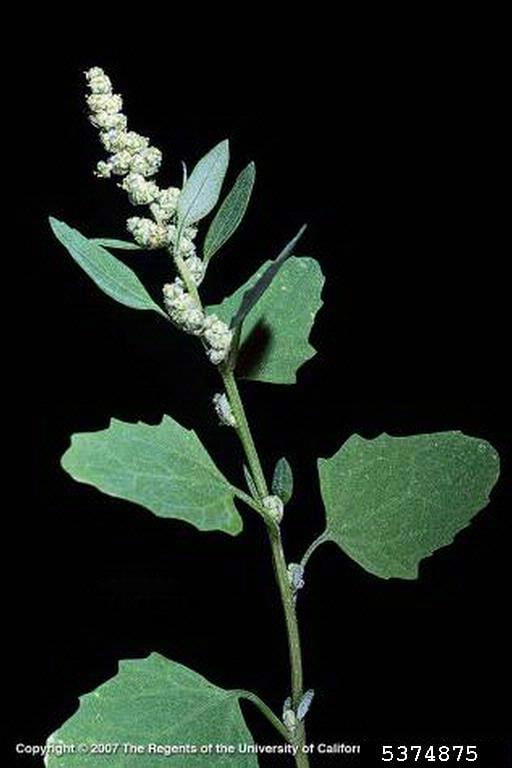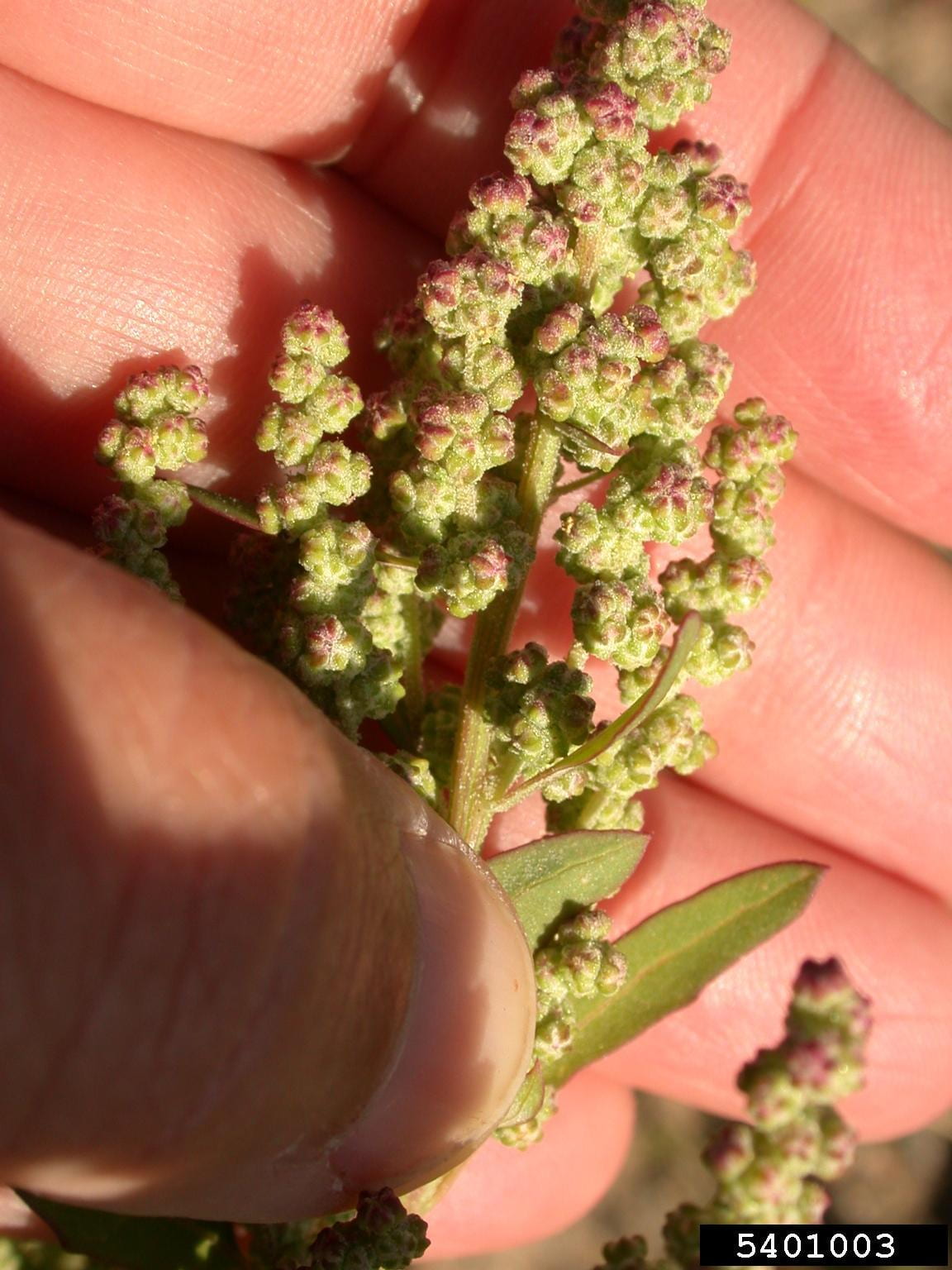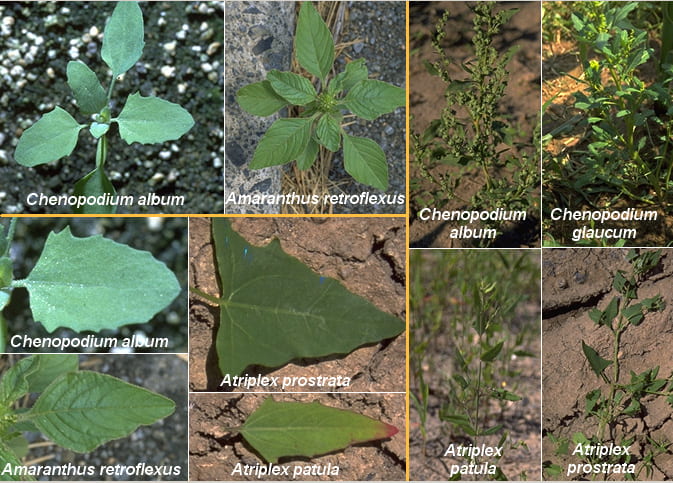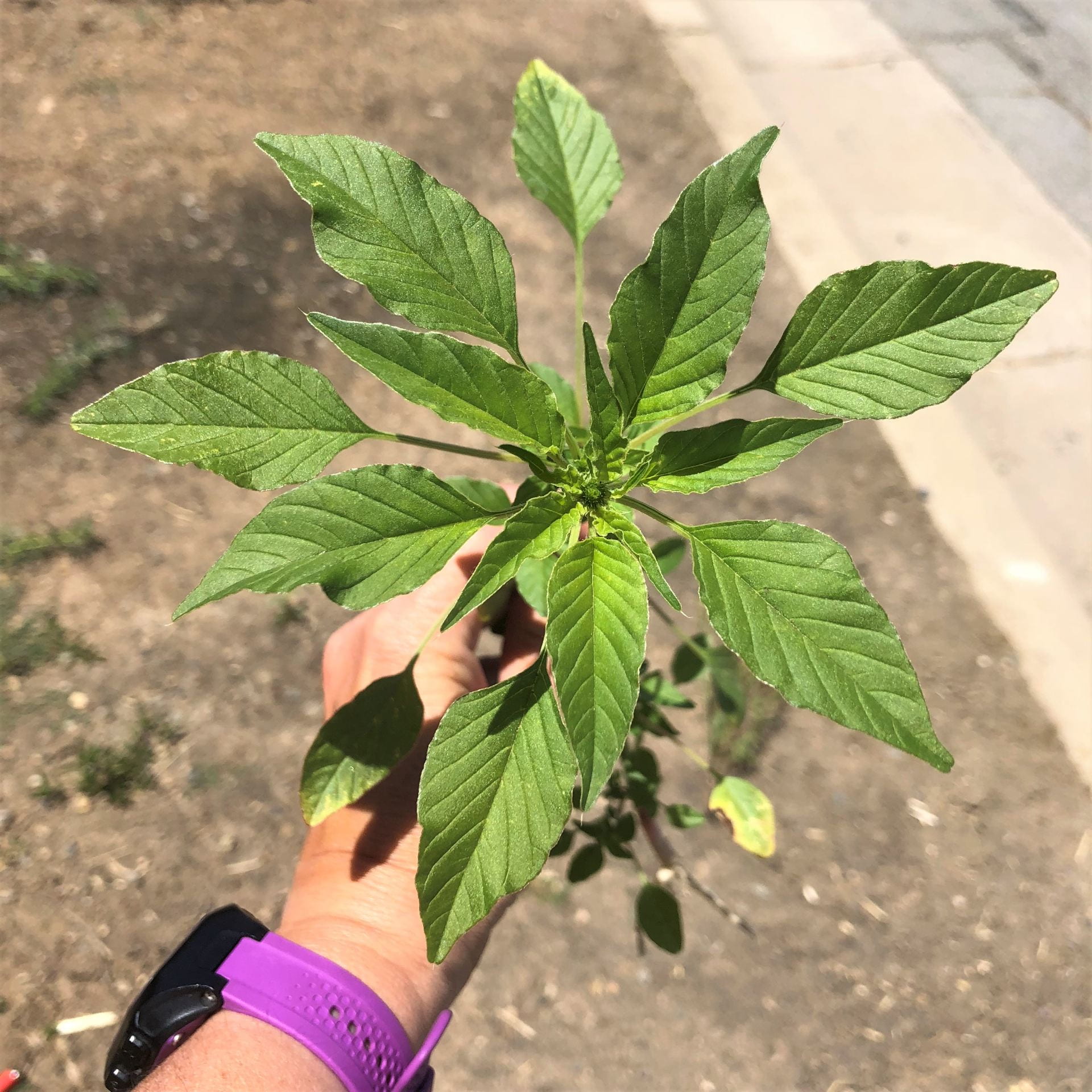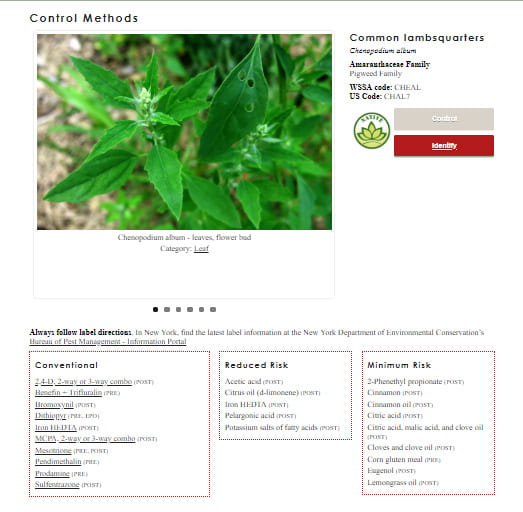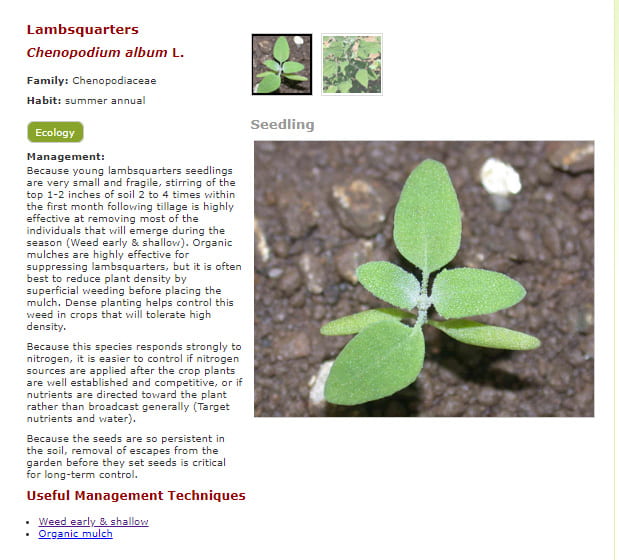Common lambsquarters (Chenopodium album L.) is a widespread weed of agricultural crops, horticultural crops, and gardens. It also grows in landscapes, waste places, and disturbed sites, on both acidic and alkaline soils, and is common throughout the US.
There have been reports of herbicide resistance in the US since 1975 with most reports for corn, but also in soybeans, cropland, nurseries, mint and potatoes. Up until 2001, all reports for resistance were to Photosystem II inhibitors (Group 5, e.g. atrazine). Since 2001, two cases of resistance to ALS inhibitors (Group 2) have been reported in the US.
A single plant can produce thousands of seeds, which generally germinate at a depth of 0.5 – 3 cm below the soil surface.
Identification
Seedlings: Seedlings emerge in the spring to early summer. Cotyledons are distinctively long and narrow, with no midvein and purple undersides. While the first pair of leaves to emerge are opposite each other, all subsequent leaves are alternately arranged. Leaf margins on young leaves are entire or have a few teeth. Surfaces of cotyledons, young leaves, and stems have a grayish-white powdery coating.
Leaves: Leaves are alternate and irregularly toothed. Leaves normally roughly triangular but can vary to diamond-shaped or lance-shaped. Freshly emerging leaves have the same grayish-white powdery coating as the seedling.
Mature plant: Plants grow up to 1 meter (3 feet) tall, with erect, branching stems. The top of the plant where new growth is occuring retains a greyish cast from the powdery coating mentioned above. Late emerging plants can begin to set seed within six weeks, even on very small plants.
Flower/fruit: Flowers are produced from June to September on spikes with a main stem and subdivided branches. Individual flowers are inconspicuous, small, green, dense, small clusters.
Similar Species: There are several other lambsquarters species, but none as common or as weedy as common lambsquarters and none have the whitish coating. Leaf shape may be superficially similar to Palmer amaranth, but lamsquarters is prominently notched to toothed and has the greyish coating on early growth that is very different from Palmer amaranth.
Common lambsquarters (C. album) and several other similar species. Photo by A DiTomasso, from “Weed Identification, Biology and Management” by A DiTommaso and A K Watson.
Management
Chemical control
Cornell University’s Turfgrass and Landscape Weed ID app offers suggestions for conventional and alternative chemical control options.
References
Uva R H, Neal J C, DiTomaso J M. 1997. Weeds of the Northeast. Book published by Cornell University, Ithaca NY. The go-to for weed ID in the Northeast; look for a new edition sometime in 2019.
The Weed Science Society of America’s herbicide resistance database. See all the records of herbicide resistance for a weed species from around the globe. This is helpful to understand what resistances have been found, which can help explain what you’re seeing in the field. You can also search for resistant species by location.
Cornell University’s Weed Ecology and Management website. Contains a wealth of information on ecological management of agricultural and garden weeds. Look for a revamp of this site in 2020 or 2021.
Cornell University’s Turfgrass and Landscape Weed ID app. Identification and control options for weeds common to turf, agriculture, and gardens in New York; uses a very simple decision tree to identify your weed.
The TakeAction website’s common lambsquarters management page. Provides an overview of herbicide resistance in common lambsquarters, why lambsquarters is a troublesome weed, and steps to manage it in your field. This website has a focus on soybean management.
Michigan State University’s weed identification page for common lambsquarters: https://www.canr.msu.edu/resources/common_lambsquarters.

